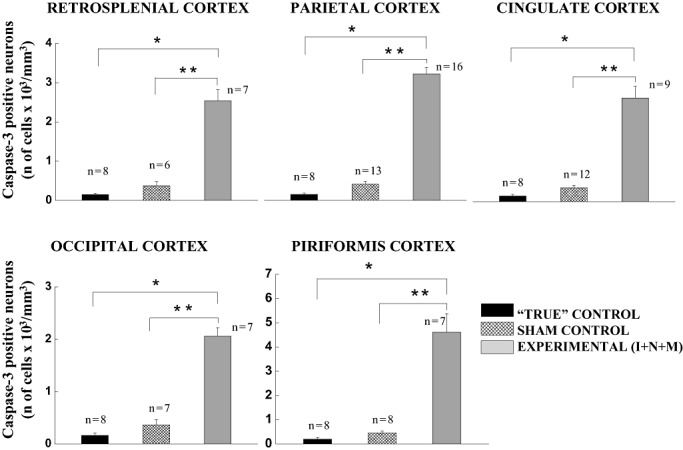Figure 3.

Anesthesia induces significant caspase‐3 activation in fetal guinea pig brains in several cortical brain regions. The sensitivity of cerebral cortices in fetal guinea pig brains (35–40 days gestational age) to general anesthesia is quantified as the number of caspase‐3‐positive cells/mm3 in the mid‐zone of the cortex (layers IV and V). The density of caspase‐3‐positive neurons in the “true” controls was minimal in all cortical regions (eg, retrosplenial, parietal, cingulate, occipital and piriform cortices). Although a somewhat higher degree of caspase‐3 labeling was detected in the sham controls (exposed to a continuous fentanyl infusion, 15 µg/kg/h), the difference was not statistically significant when compared with the “true” controls. Triple anesthesia combination containing isoflurane (0.55‐vol%), N2O (75 vol‐%), and midazolam [1 mg/kg, i.m. (I + N + M)] induced a significant increase in caspase‐3 labeling compared with the “true” and sham controls (*P < 0.001, and **P < 0.01, respectively). (The number of fetuses per each data point is indicated in the graph.)
